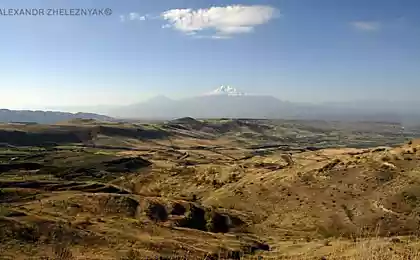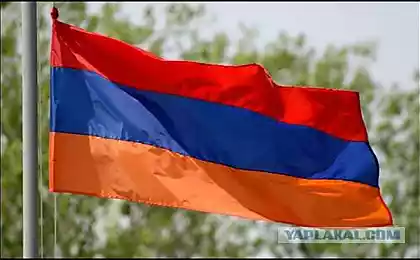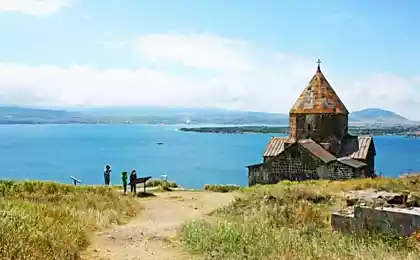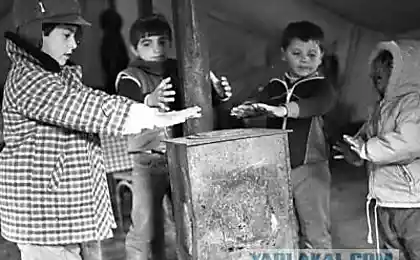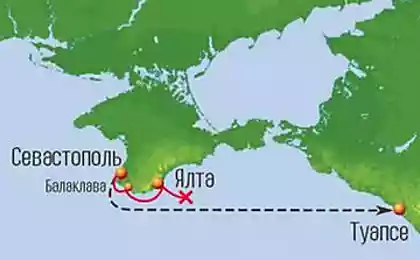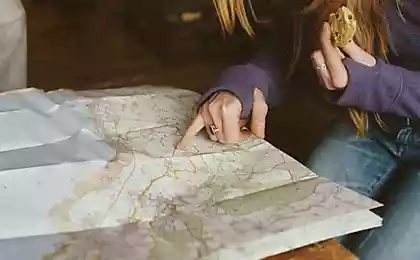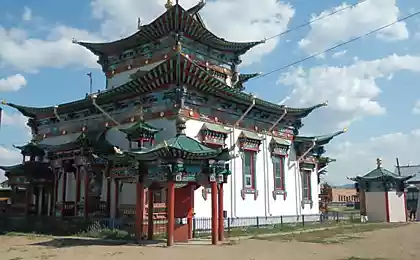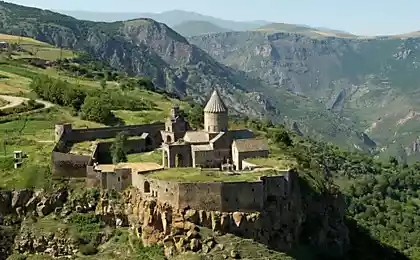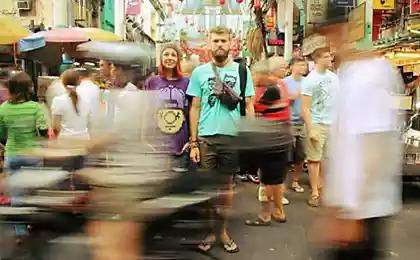1086
Travel Armenia
This year my wife and I thought a lot about where to go on vacation.
And staying on Armenia is a very unusual choice of the country, many would say, but so wanted.
We decided to share with YaPovtsami small photo of our trip.
Photographed together on a camera (each with its own - not to quarrel)
There are 80 letters and photos.
Please do not break.
1. Coat of arms of Armenia
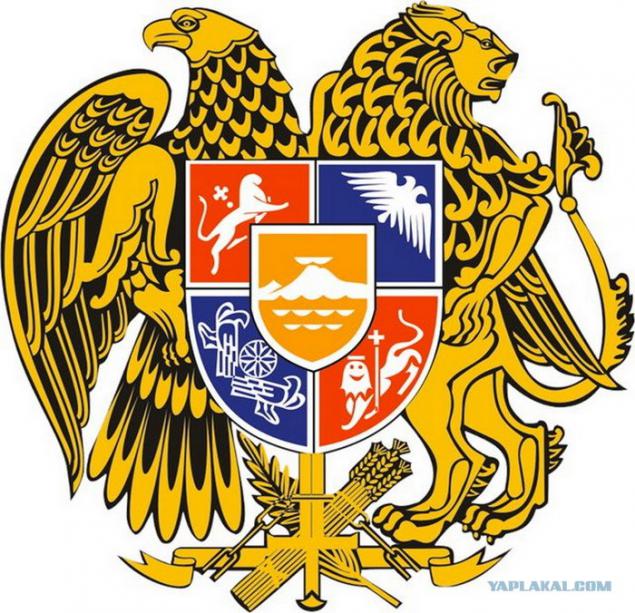
2. When choosing a hotel, we stopped at the hostel hostelinyerevan.com
Upon arrival it was found out that in our room that is not in order and live in it is not possible.
Instead, we were given a 1-bedroom apartment in the central district of Yerevan for the same money.
Excellent apartment with a modern renovation.

3. The first day
Republic Square
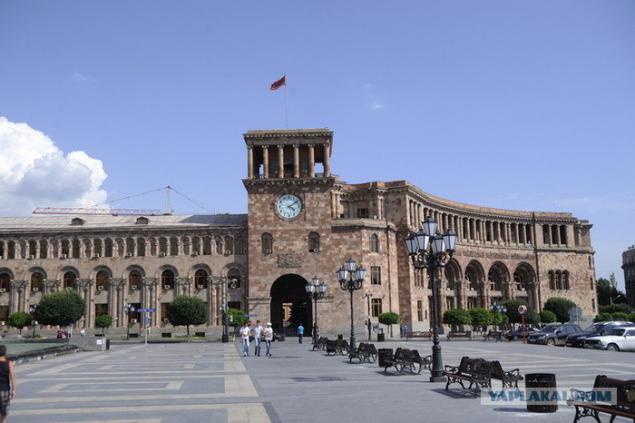
4. National Gallery of Armenia
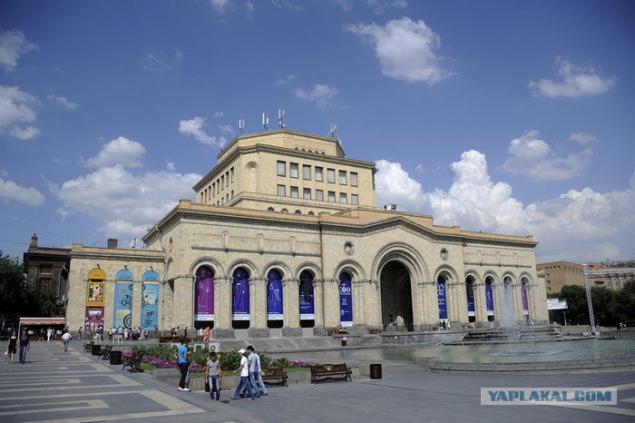
5. Cascade - one of the main attractions of Yerevan.
Its construction began in the 70s in honor of the 50th anniversary of the establishment of Soviet power in Armenia. After the collapse of the Soviet Union the construction was suspended.
Recently I bought a monument to American philanthropist of Armenian origin Gerard Cafesjian.
Now here is the Museum of Contemporary Art.

6. Modern sculptures.
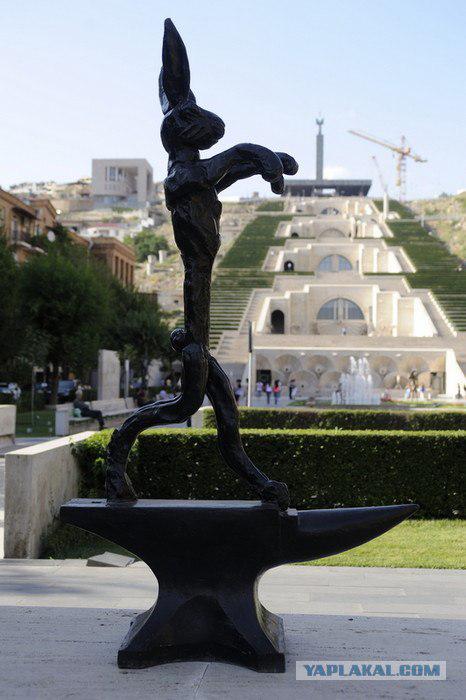
7. Fountains.

8. The view from Haute-tier Cascade.
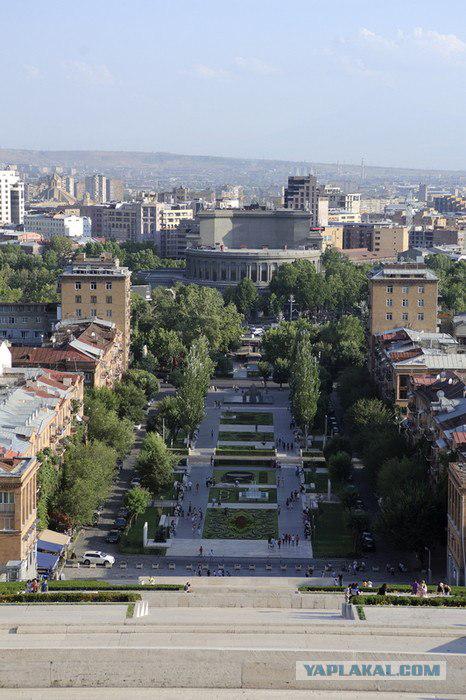
9. lion sculpture from tires.
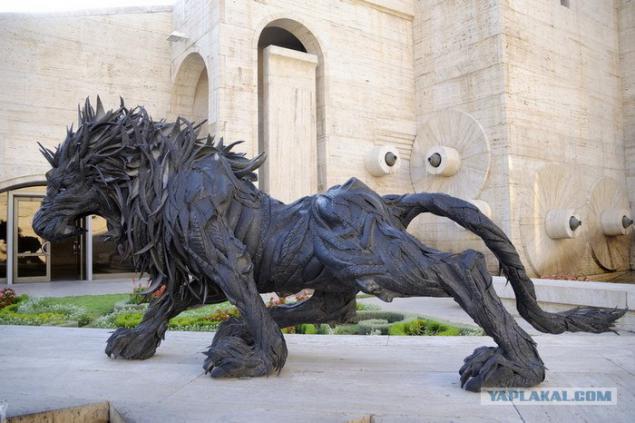
10. Gymnasts
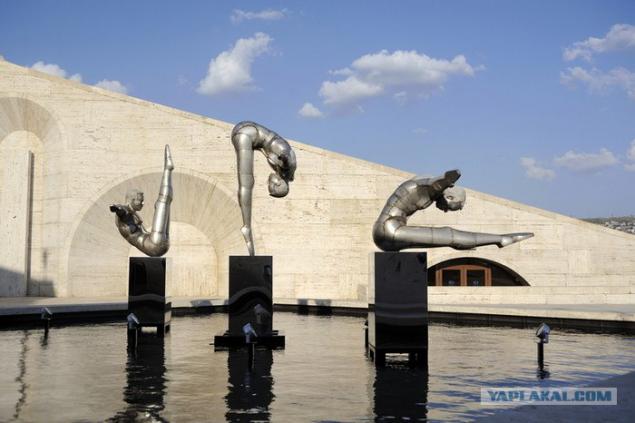
11. At the top of Cascade is an exhibition of crystals Swarovski

12. Mother Armenia - a monument in honor of the Soviet victory in the Great Patriotic War.

13. The view from the observation deck Yerevan Haghtanak Park.
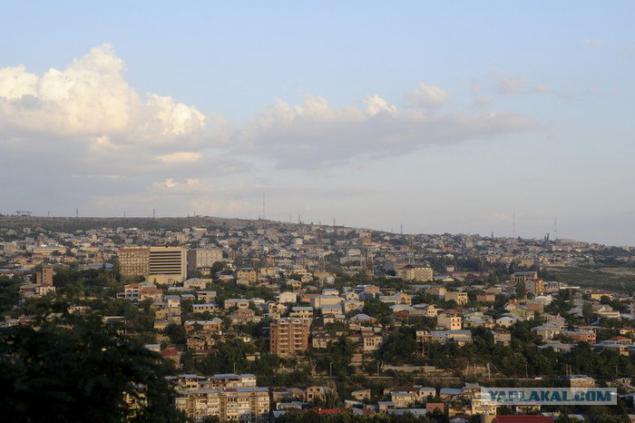
14. The second day
Ride to Ashtarak city
The city is bisected by the river gorge Kasakh
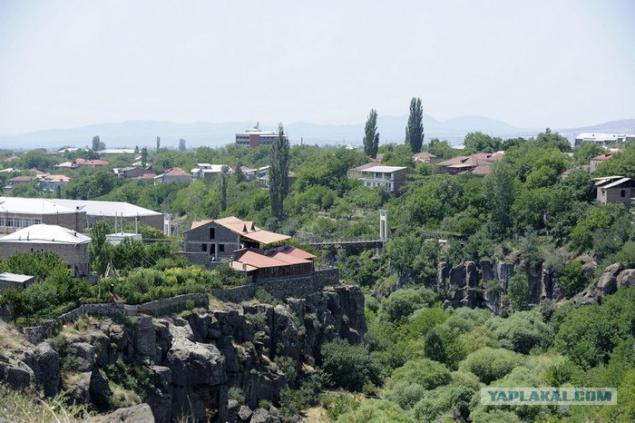
15. Church of St. Sargis.

16. Watermill in Kasakh River Gorge.

17. Terrible guard.
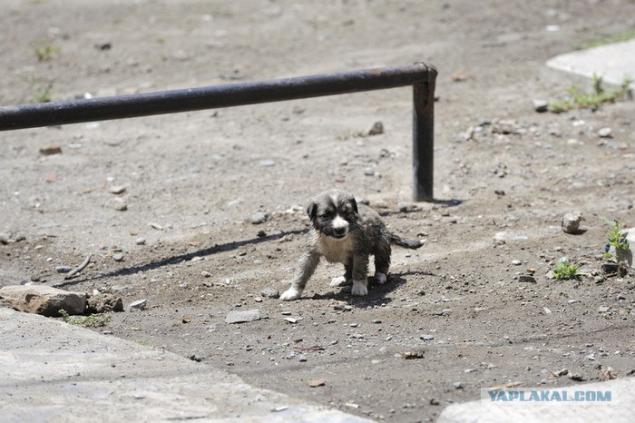
18. Church Karmravor construction of VII century. It is the only monument in Armenia, tiled roof which has survived to the present day.
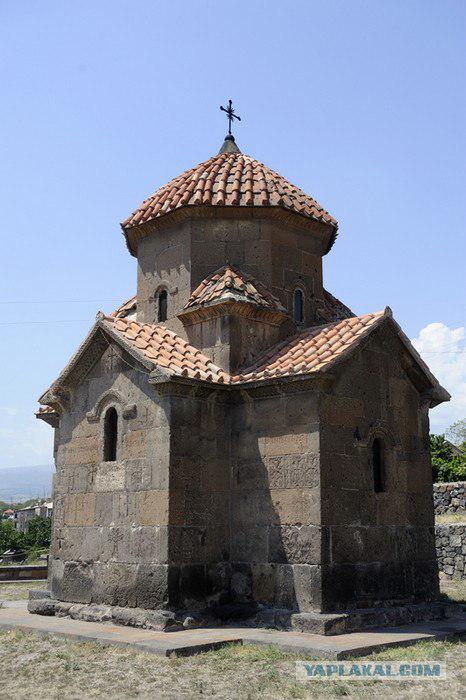
19. Cross-stones.
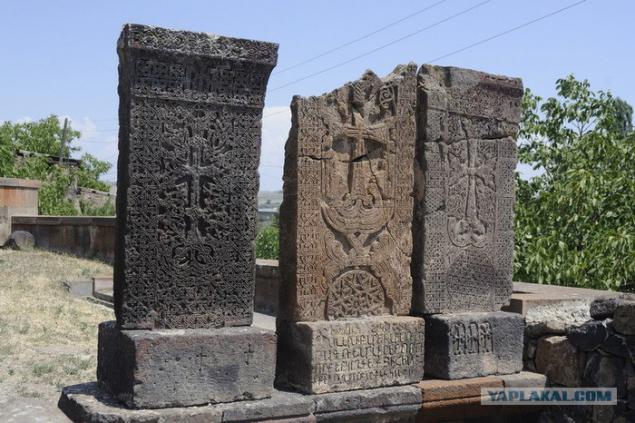
20. Tired, hungry.
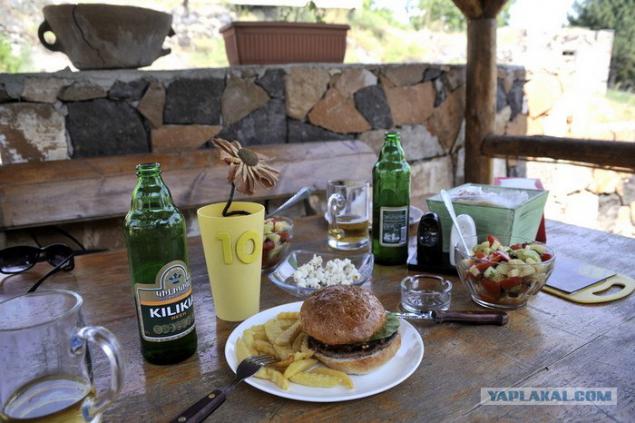
21. Church of St. Marine

22. View of Mount Aragots.

23. The highest waterfall in Armenia Kasahsky.

24. The monastic complex in the village of Ohanavan

25. kpect on the territory of the monastery complex
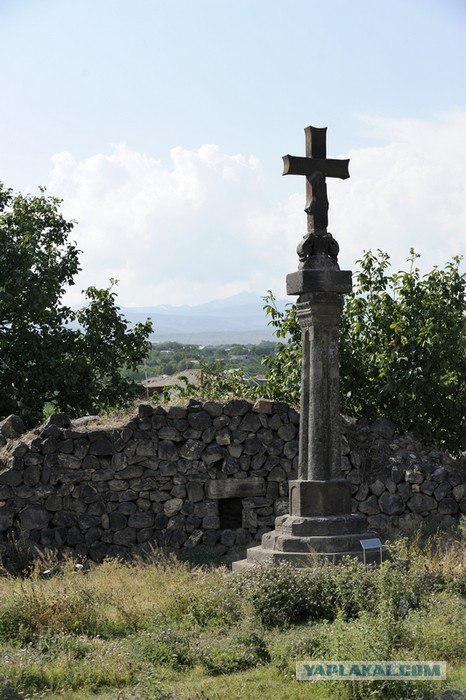
26. Modern hachkar
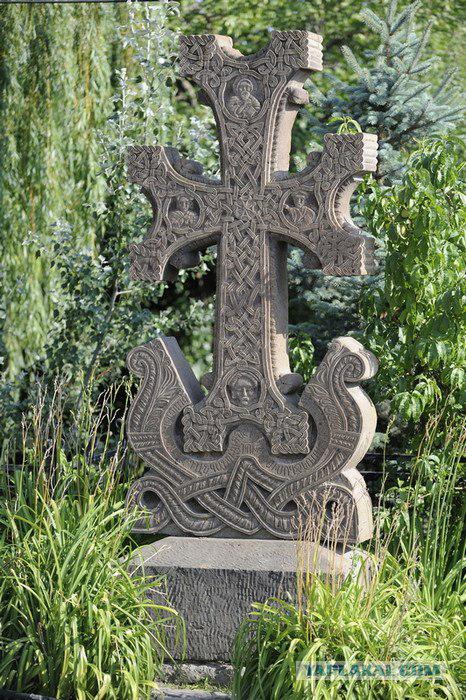
27. They returned to Yerevan.
Vartan Mamikonyan - Armenian chief, prince, the hero of the religious and national struggle of Armenians in the V century.
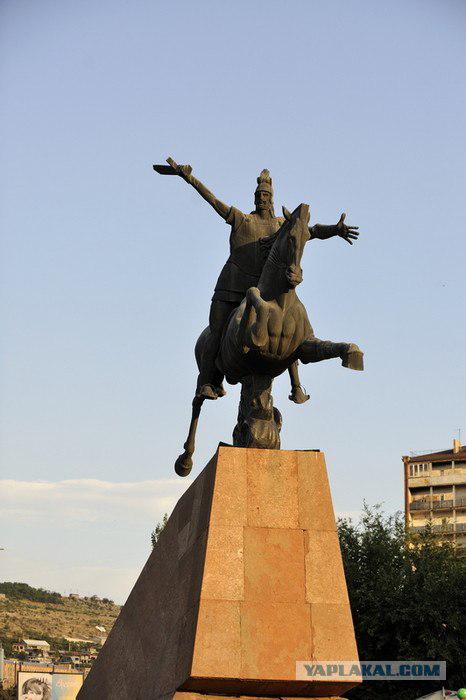
28. Saint Gregory the Illuminator Cathedral.
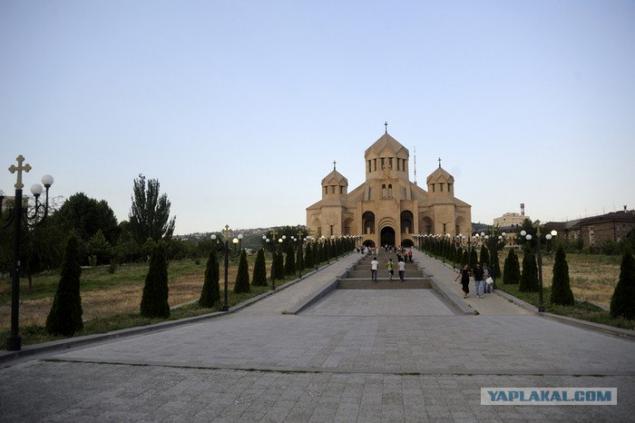
29. The view from our window.
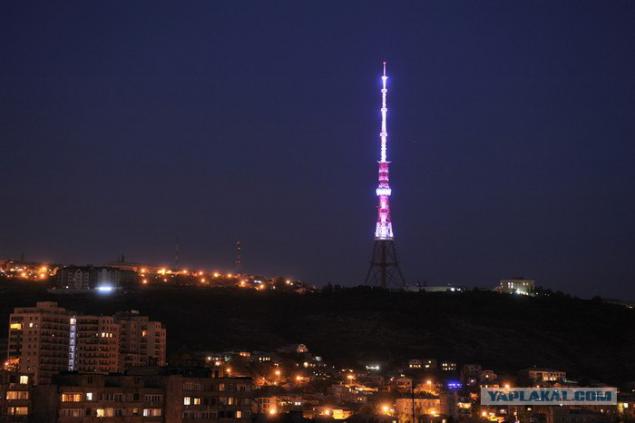
30. Day Three.
A trip to Echmiadzin and Zvartnots Monastery.
While we are looking for the bus stop - walked past the building of the National Assembly of Armenia.
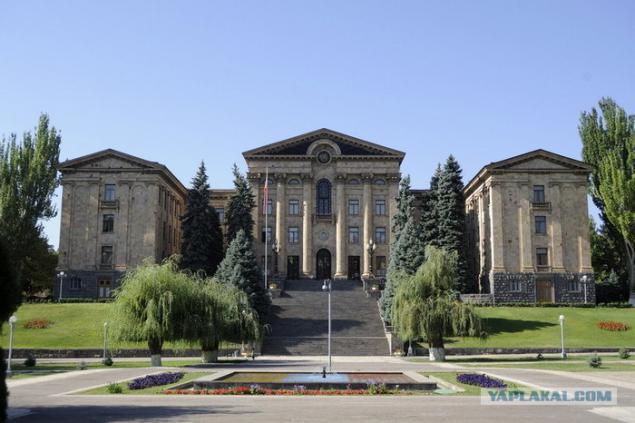
31. Zvartnots - the greatest temples of early medieval Armenian architecture.
Built with the Catholicos Nerses III in the VII century.
In 2000, the ruins of the temple and the archaeological area around it are included in the UNESCO World Heritage List in 2000.
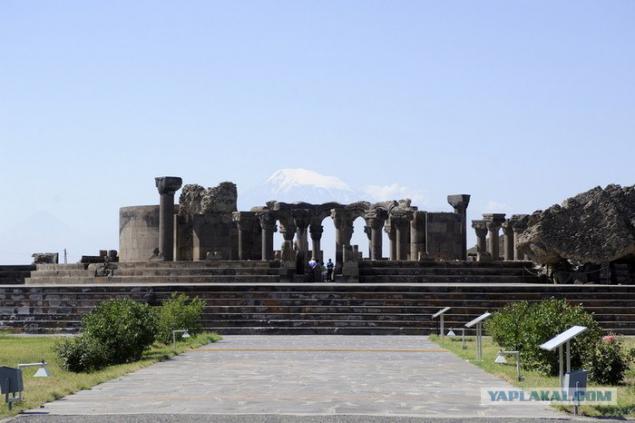
32. Around the ruins spread apricot orchard.
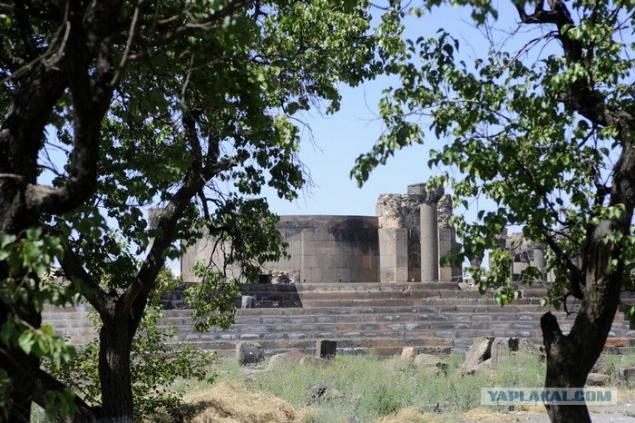
33. The ruins of the temple.

34. Further our path lay in the center of the religious culture of Armenia - Vagharshapat.
At the entrance to the city is the church St. Hripsime. Included in UNESCO World Heritage List in 2000.
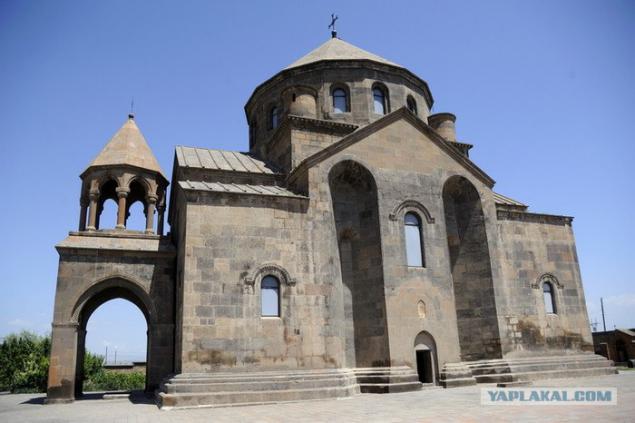
35. City Center Vagarshapat - here is the Echmiadzin Monastery.
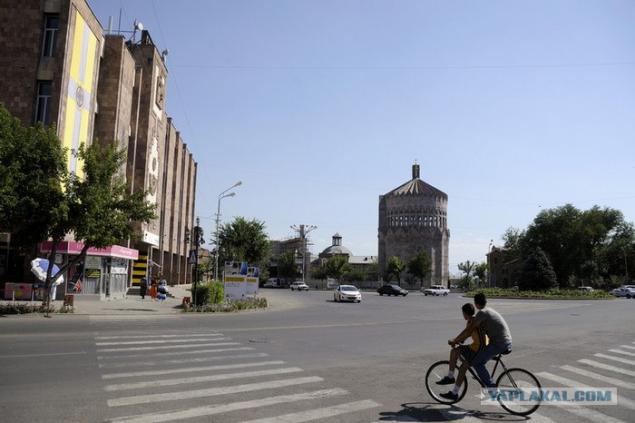
36. Time has stopped in the city.
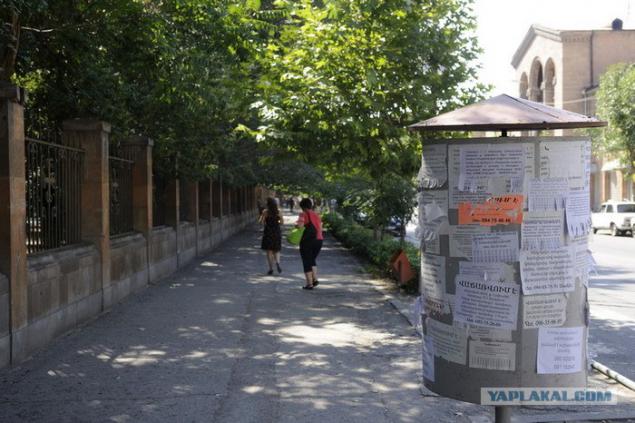
37. Echmiadzin Monastery of the Armenian Apostolic Church, the location of the throne of the Supreme Patriarch and Catholicos of All Armenians.
Wooden church was first built in 303, and then rebuilt in stone in V and VII centuries.
Included in the UNESCO World Heritage List in 2000.
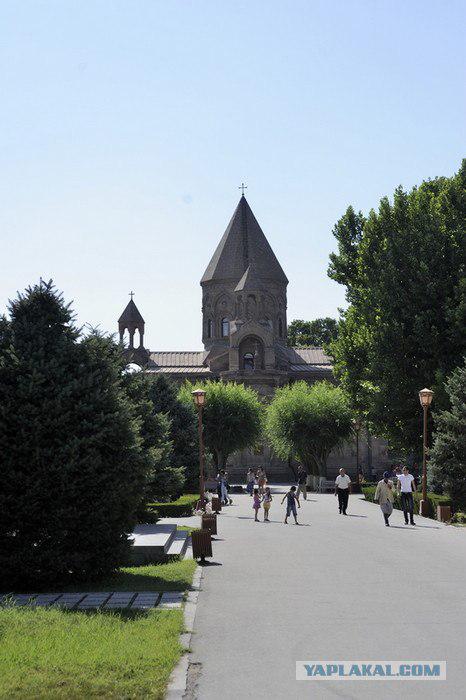
38. Everyone is welcome to enjoy the spring water of these fountains here.
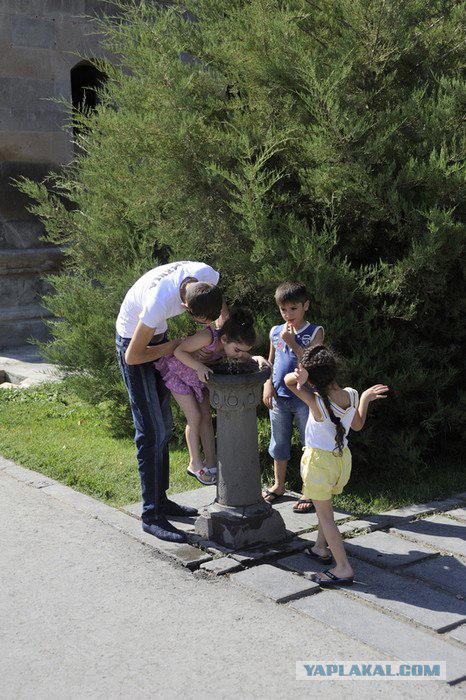
39. The bell tower of the monastery - built in 1658.

40. Around the monastery are many alleys and benches - you can sit down to think about her.
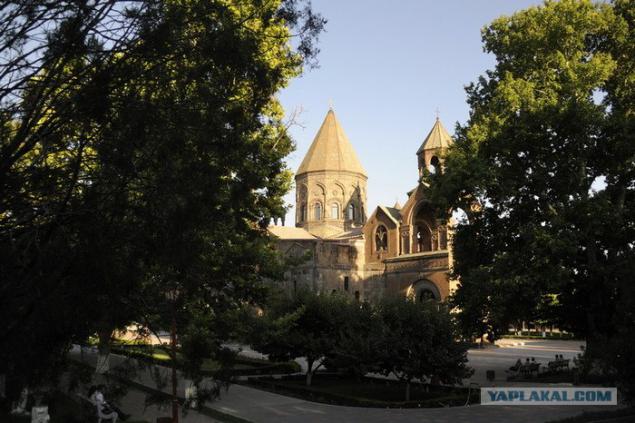
41. In the evening back to Yerevan - decided to take a walk and met a legend of the Soviet automobile industry.
GAZ-12

42. GAZ-21
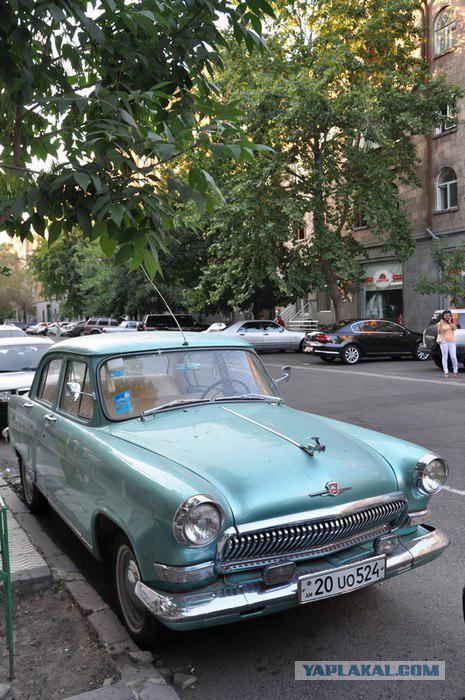
43. Sunset in Yerevan on Tumanyan street.
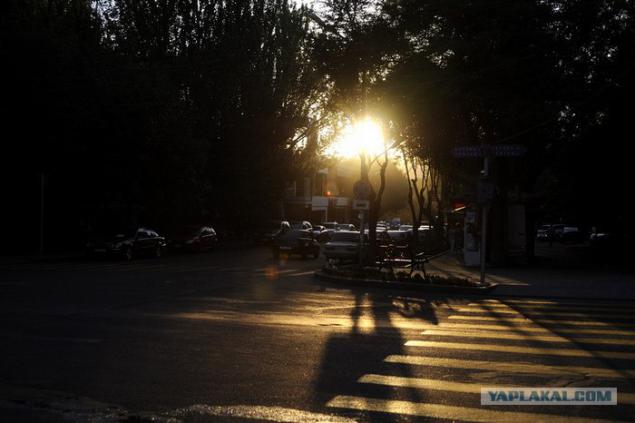
44. Dancing Fountains at Republic Square.
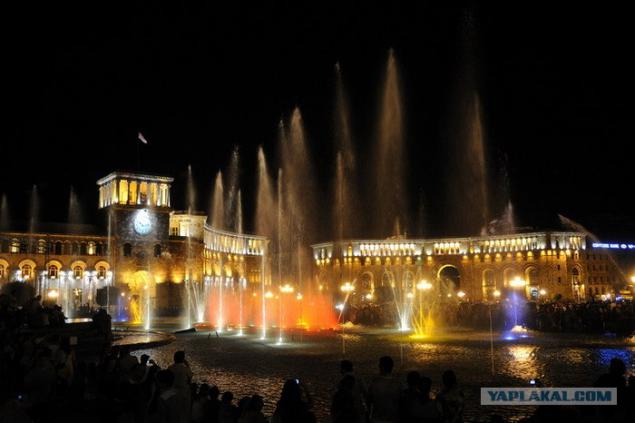
45. In the summer it is possible to admire a delightful spectacle from 21:30 to 23:00.
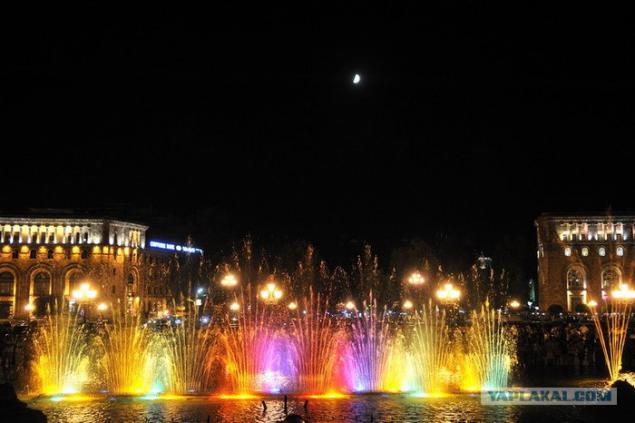
46. The Republic Square at night.
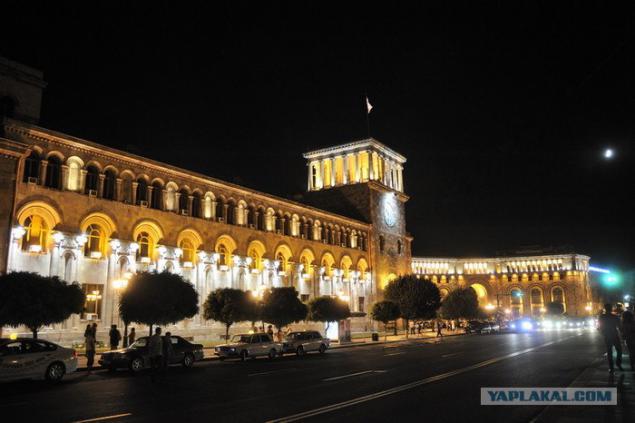
47. The fourth day.
Lake Sevan - the largest of the lakes in the Caucasus.
Located at an altitude of 1900 m above sea level
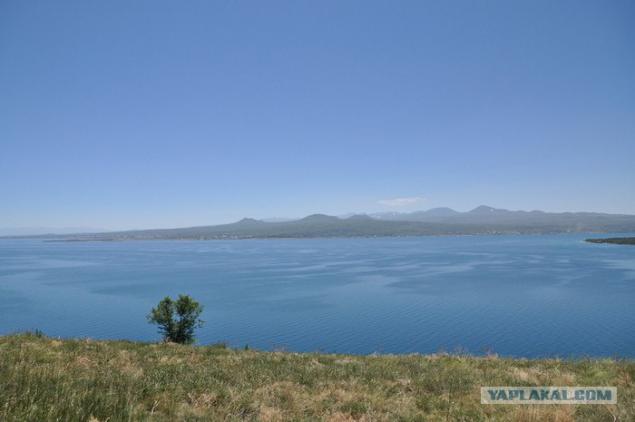
48. Sevanavank monastery - founded in 874 by Princess Mariam.
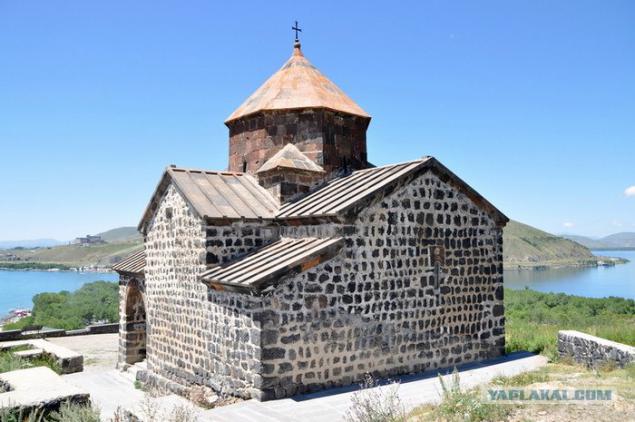
49. The fifth day.
Drive to Garni and Geghard
Garni Temple - ancient Armenian pagan temple I in. BC The only surviving monument in Armenia belonging to the era of paganism and Hellenism.
It is believed that the temple was dedicated to the pagan sun-god Mithra.
He was awarded the UNESCO prize in 2011.

50. View of the gorge of the Azat river from the observation deck of the temple
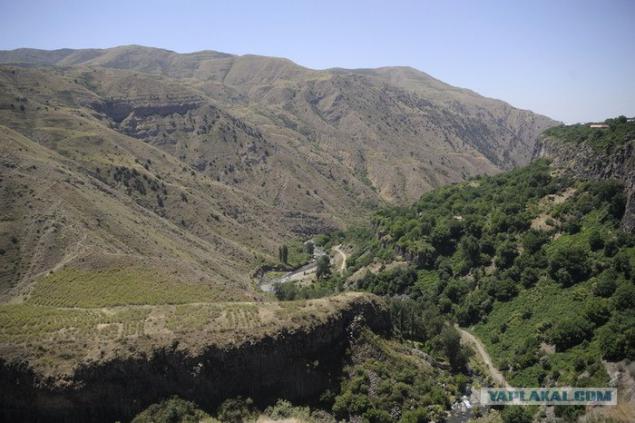
51. We decided to go down to the river on a steep path - on the precipice is someone's house.

52. Hexagonal rock overhanging the river bed, consisting of basalt pillars, similar to organ pipes.

53. Waterfall.

54. Gegard Monastery complex - was founded in the IV. on the site of a sacred source originating in a cave.
So originally it was called Ayrivank, which means "cave monastery." According to legend, the founder of the monastery was St. Gregory the Illuminator.
Part of the monastery complex of temples entirely carved into the rock.
Included in the UNESCO World Heritage List in 2000.
Entrance to the monastery.

55. Courtyard.
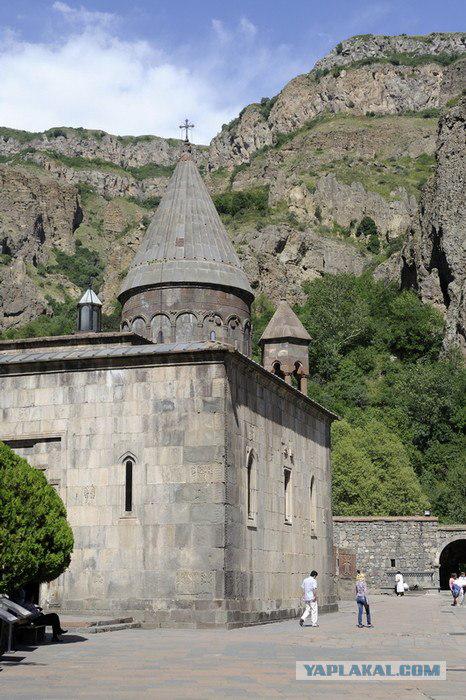
56. Inside the sacristy.
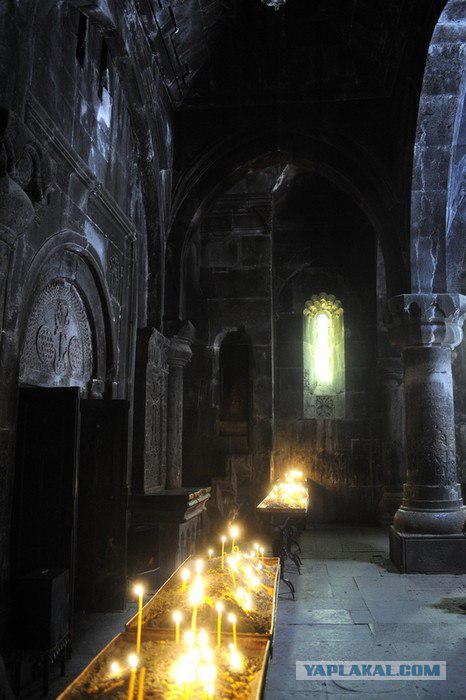
57. Candles.
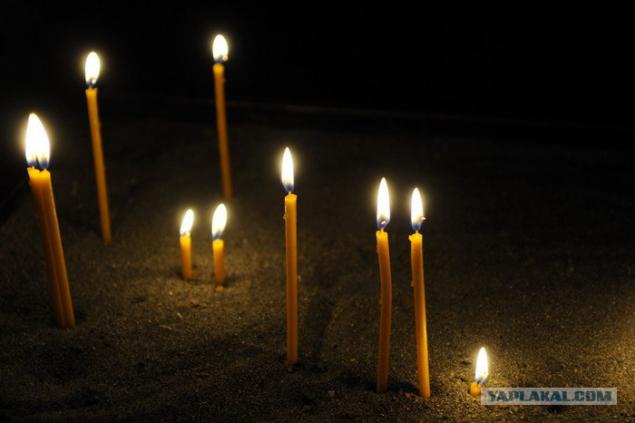
58. Katoghike - the main church of the complex was built in 1215
Altar.
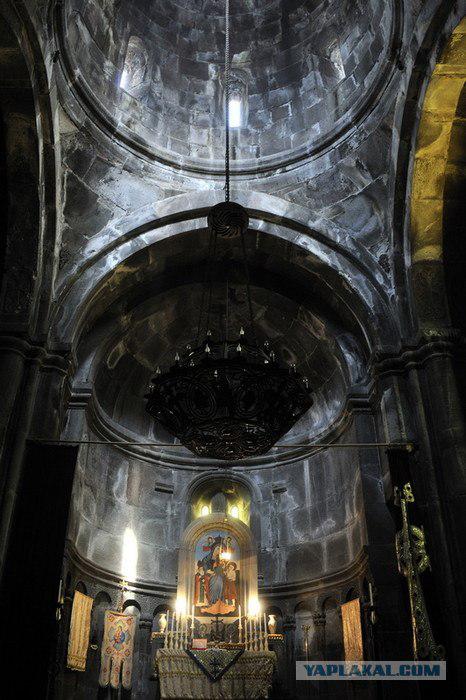
59. sunbeam from the window.
There is something mysterious.
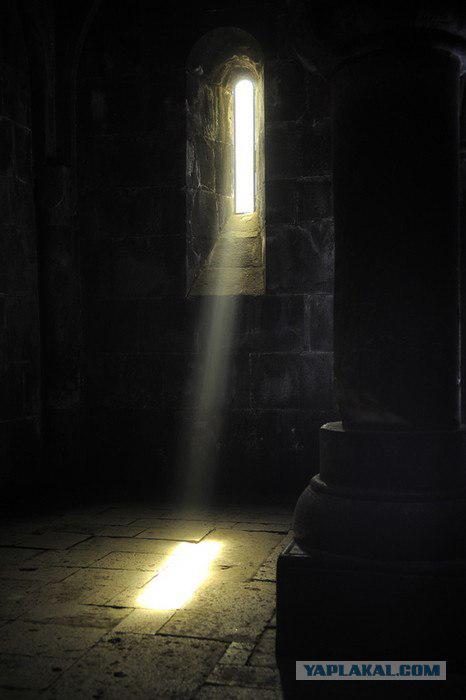
60. The inner courtyard of the complex.
All the same fountains with spring water.
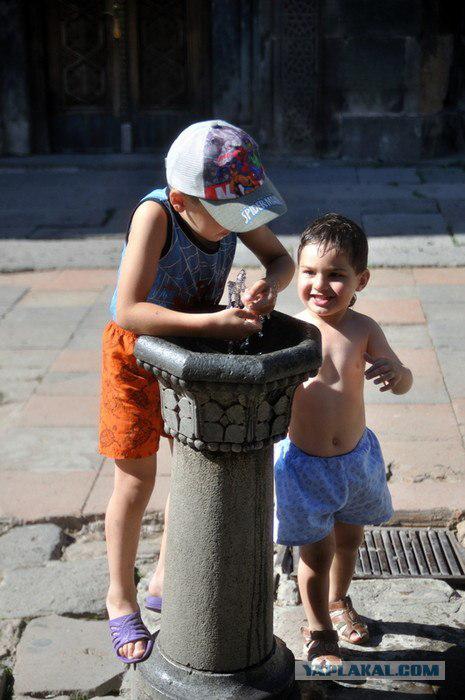
61. On the way to Yerevan.
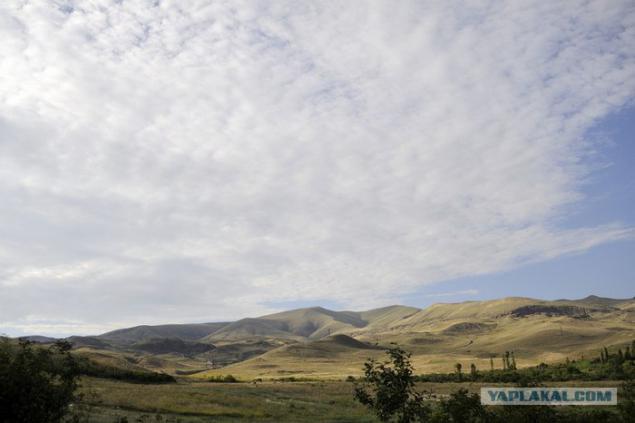
62. After the narrow gorges of this space already captures the spirit.

63. The sixth day.
Yerevan.
Museum-Institute of Armenian Genocide - was opened in 1995.
The Armenian Genocide (often used the expression Great Crime) - genocide, organized and Implemented in 1915 (according to some sources, which lasted until 1923) in the territories controlled by the authorities of the Ottoman Empire.
The genocide was carried out by means of physical destruction and deportation, including the displacement of the civilian population in the conditions that lead to certain death.
Current estimates of the number of victims vary from 200 thousand to 2 million people
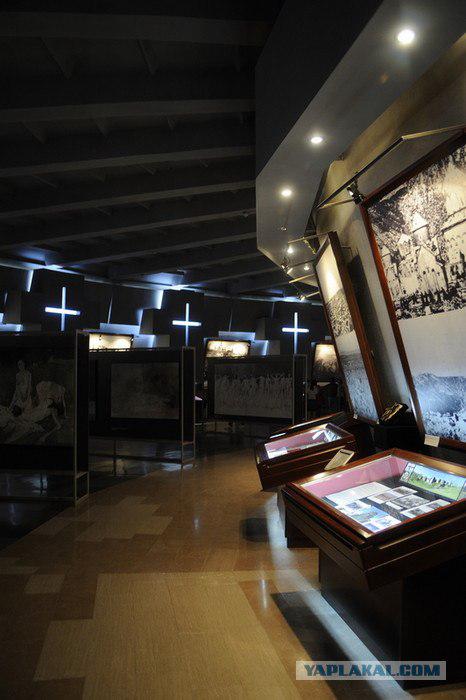
64. The permanent exhibition.
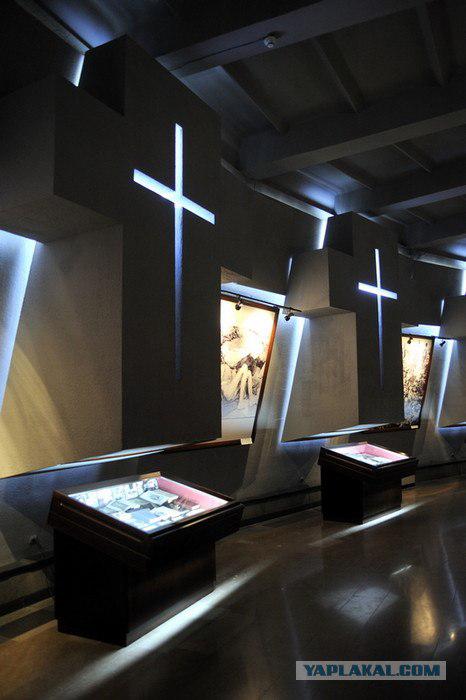
65. In this hall on granite pedestals in crystal vessels kept the earth brought from lost six vilayets of Western Armenia: Karina Wang Bagesha, Sebastia, Kharberd, Tigranakert.
At the moment, the area lost in the territory of Turkey.
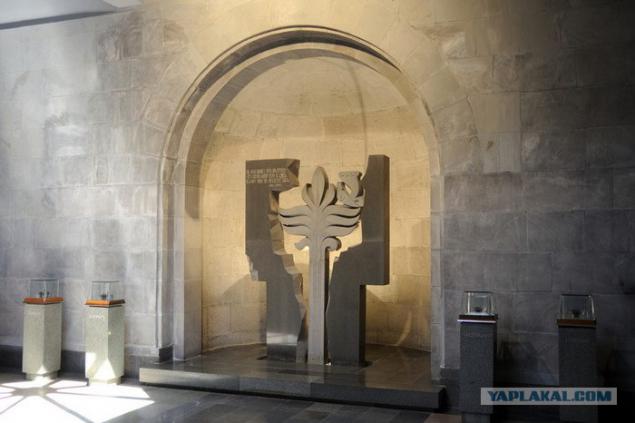
66. Tsitsernakaberd Memorial Complex dedicated to the victims of the 1915 Armenian Genocide.

67. Eternal Flame Tsitsernakaberd.
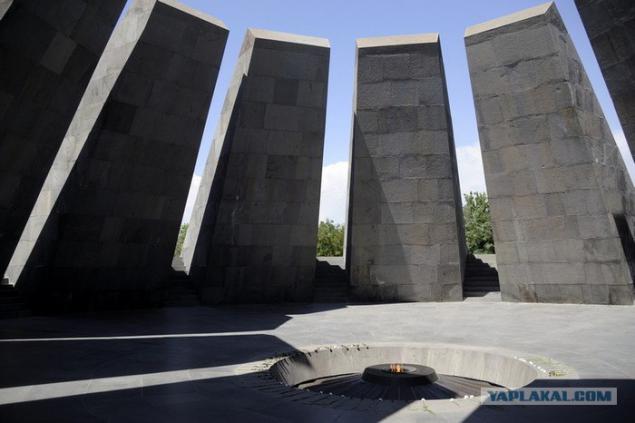
68. Yerevan Brandy Factory Ararat.
Unfortunately we did not get to tour.
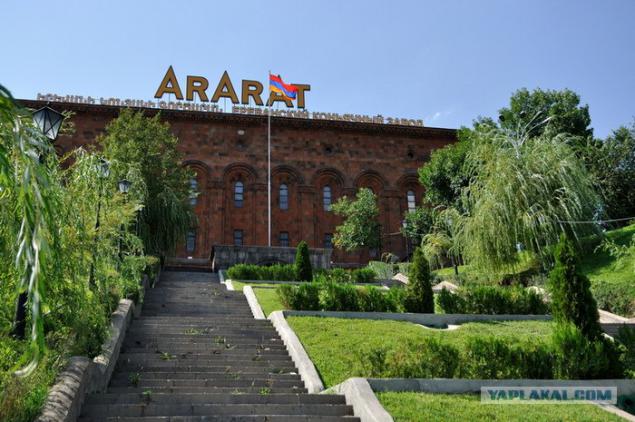
69. The bridge Haghtanak (Victory Bridge) - semiarochny bridge over the river Hrazdan.
Behind him is the Yerevan Wine and Cognac Plant "Noah»
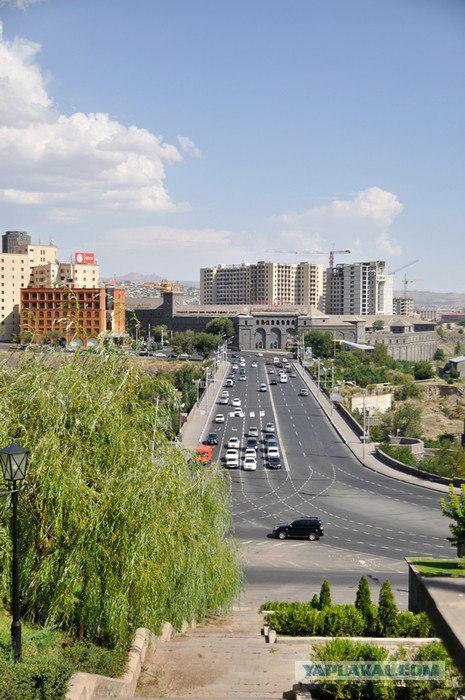
70. The seventh day.
Trip to Khor Virap - the monastery of the Armenian Apostolic Church, located in Armenia, near the border with Turkey, at the foot of Mount Ararat
The monastery is located on an underground prison in which Armenian king Trdat III kept in captivity for about 13 years, St. Gregory the Illuminator.
Currently, Mount Ararat is in Turkey
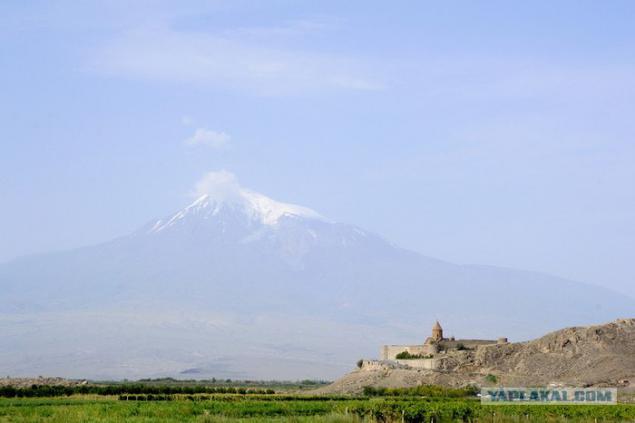
71. In 642 Catholicos Nerses III built a chapel. Later, the chapel was destroyed.
Instead, in 1662g. built existing church of the Holy Virgin.

72. The chapel of the temple.
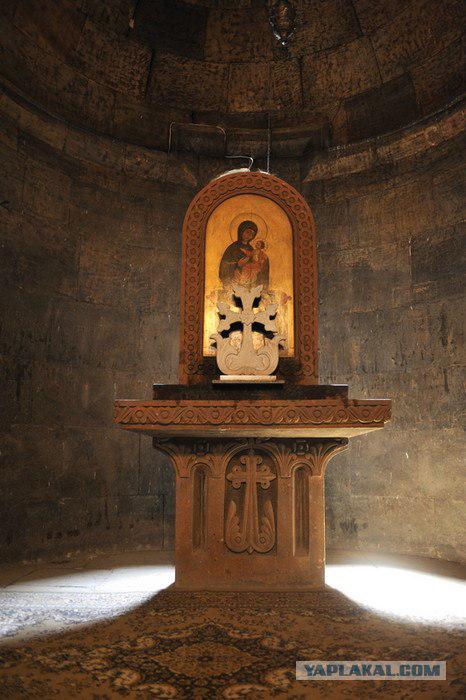
73. Worship kpect in prison, where, according to legend, St. Gregory the Illuminator was in the pit for 13 years.

74. The priest invited us to attend the Liturgy in the Church of the Holy Virgin.
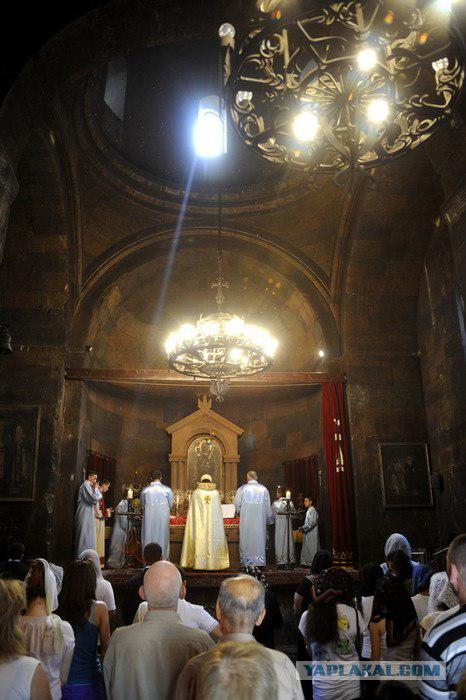
75. Liturgy.
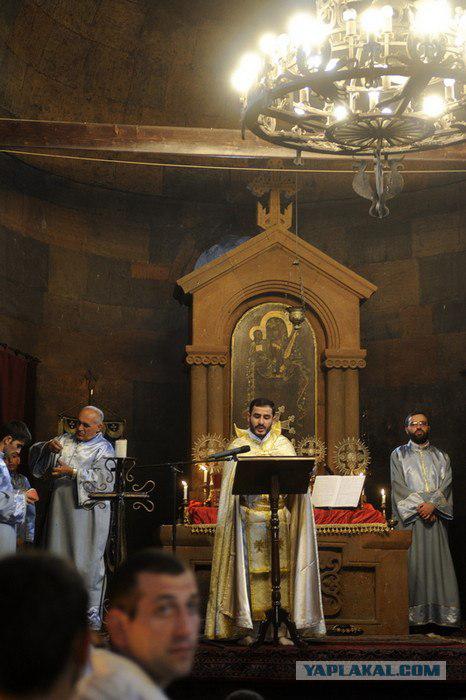
76. View of the monastery of Khor Virap hill.
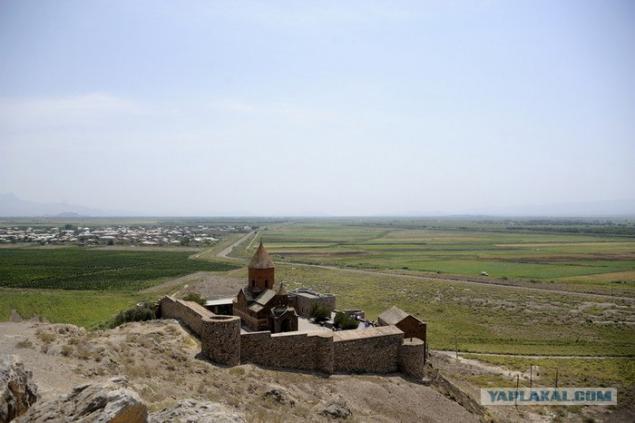
77. They returned to Yerevan.
While looking for company store factory Ararat, we found some interesting buildings
The house with columns.
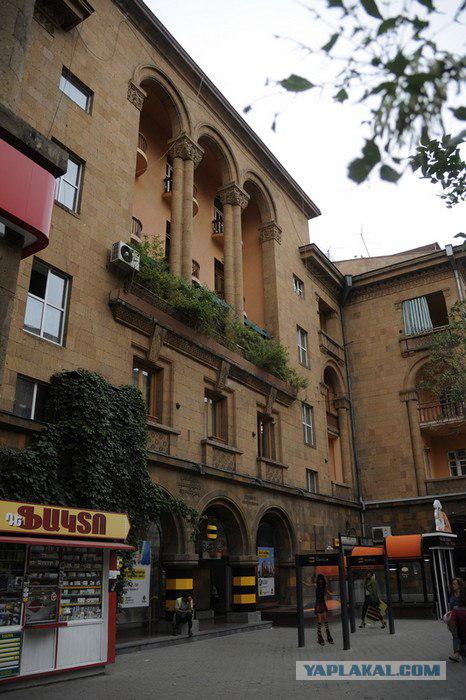
78. Conductor.
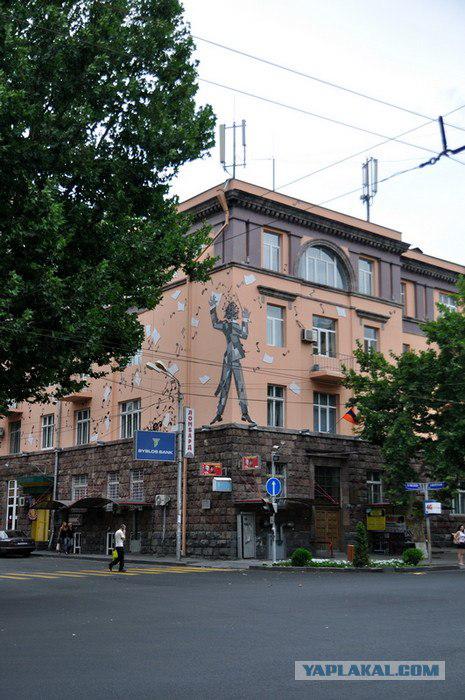
79. The restaurant Prisoner of the Caucasus.
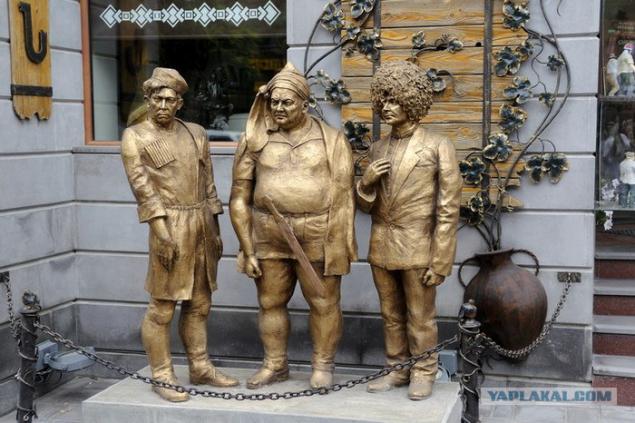
80. Here travelers
Thank you for attention.
We hope you like our fototchet
Posted in [mergetime] 1352028327 [/ mergetime]
Strictly do not judge - the first normal position)))
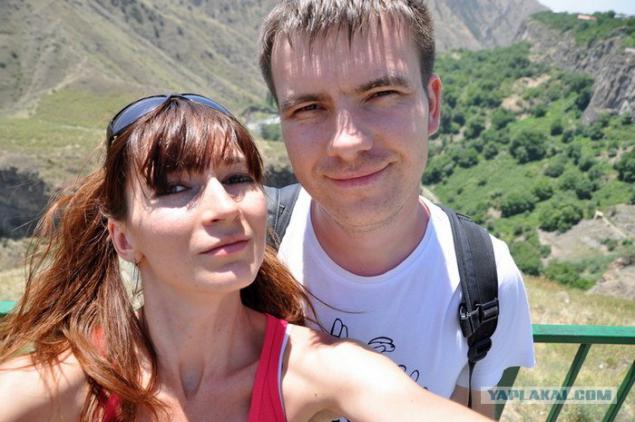
Source:
And staying on Armenia is a very unusual choice of the country, many would say, but so wanted.
We decided to share with YaPovtsami small photo of our trip.
Photographed together on a camera (each with its own - not to quarrel)
There are 80 letters and photos.
Please do not break.
1. Coat of arms of Armenia

2. When choosing a hotel, we stopped at the hostel hostelinyerevan.com
Upon arrival it was found out that in our room that is not in order and live in it is not possible.
Instead, we were given a 1-bedroom apartment in the central district of Yerevan for the same money.
Excellent apartment with a modern renovation.

3. The first day
Republic Square

4. National Gallery of Armenia

5. Cascade - one of the main attractions of Yerevan.
Its construction began in the 70s in honor of the 50th anniversary of the establishment of Soviet power in Armenia. After the collapse of the Soviet Union the construction was suspended.
Recently I bought a monument to American philanthropist of Armenian origin Gerard Cafesjian.
Now here is the Museum of Contemporary Art.

6. Modern sculptures.

7. Fountains.

8. The view from Haute-tier Cascade.

9. lion sculpture from tires.

10. Gymnasts

11. At the top of Cascade is an exhibition of crystals Swarovski

12. Mother Armenia - a monument in honor of the Soviet victory in the Great Patriotic War.

13. The view from the observation deck Yerevan Haghtanak Park.

14. The second day
Ride to Ashtarak city
The city is bisected by the river gorge Kasakh

15. Church of St. Sargis.

16. Watermill in Kasakh River Gorge.

17. Terrible guard.

18. Church Karmravor construction of VII century. It is the only monument in Armenia, tiled roof which has survived to the present day.

19. Cross-stones.

20. Tired, hungry.

21. Church of St. Marine

22. View of Mount Aragots.

23. The highest waterfall in Armenia Kasahsky.

24. The monastic complex in the village of Ohanavan

25. kpect on the territory of the monastery complex

26. Modern hachkar

27. They returned to Yerevan.
Vartan Mamikonyan - Armenian chief, prince, the hero of the religious and national struggle of Armenians in the V century.

28. Saint Gregory the Illuminator Cathedral.

29. The view from our window.

30. Day Three.
A trip to Echmiadzin and Zvartnots Monastery.
While we are looking for the bus stop - walked past the building of the National Assembly of Armenia.

31. Zvartnots - the greatest temples of early medieval Armenian architecture.
Built with the Catholicos Nerses III in the VII century.
In 2000, the ruins of the temple and the archaeological area around it are included in the UNESCO World Heritage List in 2000.

32. Around the ruins spread apricot orchard.

33. The ruins of the temple.

34. Further our path lay in the center of the religious culture of Armenia - Vagharshapat.
At the entrance to the city is the church St. Hripsime. Included in UNESCO World Heritage List in 2000.

35. City Center Vagarshapat - here is the Echmiadzin Monastery.

36. Time has stopped in the city.

37. Echmiadzin Monastery of the Armenian Apostolic Church, the location of the throne of the Supreme Patriarch and Catholicos of All Armenians.
Wooden church was first built in 303, and then rebuilt in stone in V and VII centuries.
Included in the UNESCO World Heritage List in 2000.

38. Everyone is welcome to enjoy the spring water of these fountains here.

39. The bell tower of the monastery - built in 1658.

40. Around the monastery are many alleys and benches - you can sit down to think about her.

41. In the evening back to Yerevan - decided to take a walk and met a legend of the Soviet automobile industry.
GAZ-12

42. GAZ-21

43. Sunset in Yerevan on Tumanyan street.

44. Dancing Fountains at Republic Square.

45. In the summer it is possible to admire a delightful spectacle from 21:30 to 23:00.

46. The Republic Square at night.

47. The fourth day.
Lake Sevan - the largest of the lakes in the Caucasus.
Located at an altitude of 1900 m above sea level

48. Sevanavank monastery - founded in 874 by Princess Mariam.

49. The fifth day.
Drive to Garni and Geghard
Garni Temple - ancient Armenian pagan temple I in. BC The only surviving monument in Armenia belonging to the era of paganism and Hellenism.
It is believed that the temple was dedicated to the pagan sun-god Mithra.
He was awarded the UNESCO prize in 2011.

50. View of the gorge of the Azat river from the observation deck of the temple

51. We decided to go down to the river on a steep path - on the precipice is someone's house.

52. Hexagonal rock overhanging the river bed, consisting of basalt pillars, similar to organ pipes.

53. Waterfall.

54. Gegard Monastery complex - was founded in the IV. on the site of a sacred source originating in a cave.
So originally it was called Ayrivank, which means "cave monastery." According to legend, the founder of the monastery was St. Gregory the Illuminator.
Part of the monastery complex of temples entirely carved into the rock.
Included in the UNESCO World Heritage List in 2000.
Entrance to the monastery.

55. Courtyard.

56. Inside the sacristy.

57. Candles.

58. Katoghike - the main church of the complex was built in 1215
Altar.

59. sunbeam from the window.
There is something mysterious.

60. The inner courtyard of the complex.
All the same fountains with spring water.

61. On the way to Yerevan.

62. After the narrow gorges of this space already captures the spirit.

63. The sixth day.
Yerevan.
Museum-Institute of Armenian Genocide - was opened in 1995.
The Armenian Genocide (often used the expression Great Crime) - genocide, organized and Implemented in 1915 (according to some sources, which lasted until 1923) in the territories controlled by the authorities of the Ottoman Empire.
The genocide was carried out by means of physical destruction and deportation, including the displacement of the civilian population in the conditions that lead to certain death.
Current estimates of the number of victims vary from 200 thousand to 2 million people

64. The permanent exhibition.

65. In this hall on granite pedestals in crystal vessels kept the earth brought from lost six vilayets of Western Armenia: Karina Wang Bagesha, Sebastia, Kharberd, Tigranakert.
At the moment, the area lost in the territory of Turkey.

66. Tsitsernakaberd Memorial Complex dedicated to the victims of the 1915 Armenian Genocide.

67. Eternal Flame Tsitsernakaberd.

68. Yerevan Brandy Factory Ararat.
Unfortunately we did not get to tour.

69. The bridge Haghtanak (Victory Bridge) - semiarochny bridge over the river Hrazdan.
Behind him is the Yerevan Wine and Cognac Plant "Noah»

70. The seventh day.
Trip to Khor Virap - the monastery of the Armenian Apostolic Church, located in Armenia, near the border with Turkey, at the foot of Mount Ararat
The monastery is located on an underground prison in which Armenian king Trdat III kept in captivity for about 13 years, St. Gregory the Illuminator.
Currently, Mount Ararat is in Turkey

71. In 642 Catholicos Nerses III built a chapel. Later, the chapel was destroyed.
Instead, in 1662g. built existing church of the Holy Virgin.

72. The chapel of the temple.

73. Worship kpect in prison, where, according to legend, St. Gregory the Illuminator was in the pit for 13 years.

74. The priest invited us to attend the Liturgy in the Church of the Holy Virgin.

75. Liturgy.

76. View of the monastery of Khor Virap hill.

77. They returned to Yerevan.
While looking for company store factory Ararat, we found some interesting buildings
The house with columns.

78. Conductor.

79. The restaurant Prisoner of the Caucasus.

80. Here travelers
Thank you for attention.
We hope you like our fototchet
Posted in [mergetime] 1352028327 [/ mergetime]
Strictly do not judge - the first normal position)))

Source:

